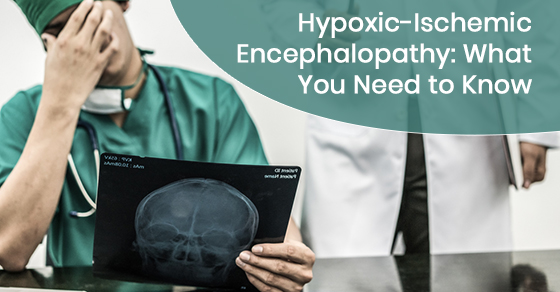As a leading medical malpractice law firm in Toronto, Sommers, Roth & Elmaleh works closely with families to ensure justice is served in malpractice cases. One of the issues we support our clients through is Hypoxic-Ischemic Encephalopathy or HIE.
In Canada, 6 out of every 1000 babies will suffer from HIE with lifelong medical implications. Unfortunately, some families are unaware of HIE, its symptoms or long-term effects. Here, we have created a guide to help Canadians better understand Hypoxic-Ischemic Encephalopathy and your rights, should somebody you love be impacted by it.
What is Hypoxic-Ischemic Encephalopathy?
Hypoxic-Ischemic Encephalopathy, or HIE, is basically a condition that occurs when brain cells are starved of oxygen. This deprivation can cause permanent injury and even death. HIE most commonly affects infants and young children and can happen for several reasons before or following birth. These causes include:
- Clotting Issues in the Mother
- Malformed lungs
- Diabetes
- Prolapse or Knotting of the Umbilical Cord
- Low Blood Pressure
- Cardiac Arrest
- Uteroplacental Vascular Insufficiency
- Preeclampsia
- Rupture of the Uterus
- Fetal-Maternal Hemorrhage
HIE often occurs in two stages. The first stage is oxygen starvation, and the second stage is called re-oxygenation. The first causes oxygen deprivation while the second is a result of oxygen flooding the bloodstream and brain, which affects cells that have been damaged by the deprivation.
What are the symptoms of Hypoxic-Ischemic Encephalopathy?
When symptoms of HIE are noticed, it is often too late to reverse the damage. Therefore, doctors should be on constant alert to the potential medical issues which could cause HIE. There are a variety of symptoms associated with HIE, the most common being:
- Seizures
- Weak or Undefined Muscle Tissue
- Shallow Breathing
- Meconium Liquor
- Reduced or Ineffective Reflex Response Rate
- Blue Tone to Skin
- Lower than Average Heart Rate
If your physician notices these symptoms, they may diagnose the baby through the Sarnat Scale, along with an MRI, EEG, or ultrasound.
What are the long-term effects of HIE?
Cases of HIE differ from child to child. While HIE caused by asphyxia can cause death in the womb, some babies lead relatively healthy lives with only mild symptoms. Others have lasting symptoms, which may cause pain and abnormal neurodevelopment.
Often, the long-term effects of Hypoxic-Ischemic Encephalopathy are developmental. This includes delays in fine and gross motor skills, cognition, and the possible impairment of vision and hearing. There is also a significant risk of developing epilepsy or cerebral palsy.
HIE and the Labour Process
While HIE tends to affect babies after birth, Hypoxic-Ischemic Encephalopathy may also be problematic during delivery. Mothers of children suffering from HIE may have extended periods of late labour or experience a ruptured placenta or uterus. This can cause pain and bleeding outside of typical birth pains. Your doctor may also notice that the baby is in the wrong position, which could cause HIE or be caused by pre-existing HIE.
Babies who are born with Hypoxic-Ischemic Encephalopathy may experience cranial trauma during birth. They are also susceptible to sepsis, meningitis, and other infections, which could prove fatal to a new baby. Babies who are born prematurely are often more prone to experience HIE.
How is Hypoxic-Ischemic Encephalopathy treated?
Depending on the stage and severity of HIE, a physician will choose an appropriate treatment regimen. If the HIE is caused by carbon monoxide poisoning, for example, oxygen may counteract the symptoms.
Similarly, hypoxic reactions can be treated by cooling the baby’s core body temperature. In fact, in rare cases of Hypoxic-Ischemic Encephalopathy, a therapeutic form of hypothermia can reduce the damage. HIE causes organ damage as oxygen supplies decrease. This often makes ventilation and other organ supports necessary. In cases of seizures, medication may also be used.
When is HIE a result of malpractice?
Hypoxic-Ischemic Encephalopathy is not always preventable; however, there are HIE cases that could be avoided if the attending physician, midwife or nurse was more proactive in treating a pregnancy that’s high-risk or shows early signs of fetal distress.
Medical professionals overseeing a woman’s pregnancy and delivering a baby are charged with their patients’ ongoing care. For high-risk pregnancies, this means constant monitoring, tests, and care. This includes testing for and treating diabetes and preeclampsia, monitoring for potential umbilical cord trauma, and placenta detachment.
HIE may also be caused by malpractice if an infection spreads from mother to baby without proper treatment, or if a physician fails to monitor heart rate and oxygen levels at regular intervals throughout pregnancy and delivery.
An attending doctor must be careful with medications used during delivery as they may cause a reaction in mother and child. Similarly, if a physician allows labour to go on too long before intervening with a cesarean section, it could cause trauma, pain, and oxygen deprivation.
When to Contact Your Lawyer About HIE
If your child has been affected by Hypoxic-Ischemic Encephalopathy due to negligence or medical mismanagement, you should contact your lawyer as soon as possible. Speaking with a lawyer early regarding cases of HIE offers the best chance for success in obtaining the support and recompense your family deserves.
Working with your lawyer ensures your legal team has better access to medical records, and the information is fresh in your mind.
For more information about Hypoxic-Ischemic Encephalopathy, call Sommers, Roth & Elmaleh at 1-844-777-7372 or contact us here.

